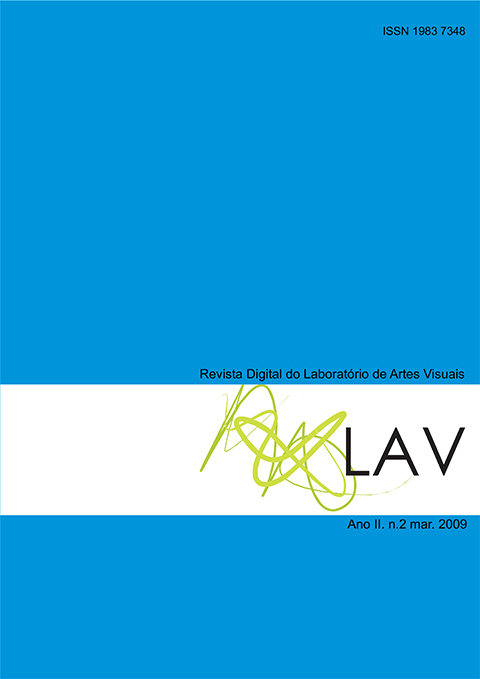Cinematic images finally made it to my art classes!
DOI:
https://doi.org/10.5902/198373482177Keywords:
Cinematographical Images, Curricula Analysis, History of LifeAbstract
This article presents some reflexions and inquietudes which motivated the writing of a research project named Other ways of seeing: cinematographic images in visual arts teaching. That work was applied in the Post-Graduation program in visual culture at Visual Arts College at Federal University of Goiás.For such , reflexions and inquietude relate directly to the place, or even better, the non place for technical images. Specially, cinematographical images in the context of visual arts teaching and learning. The project was built after assessment of ten art curricula of students from high school and the systematization of memories refering to the encounters of the researcher with the images, which permitted the conclusion that the cinem a was not there.Regarding that, in this assessment was used theoretical and methodological background, concepts and procedures of Research-Action and Teachers Research. Therefore, the curricula analysis and the memories which constitute the history of life of the researcher, end up, in which Thiollent (2004) portrays, as exploratory phasis. This part correspond to the moment in which the research field, the subjects and the problems of pragmatical order and the need to find resolutions or consciousness unveils. This way, experience along with high school students of 2ºgrade and, a set of learnings through cinematographical images, in its artistical e aesthetical dimensions would result in a broader consciousness about school relationships as well as presenting their productions for their teachers Also, the adding of technical images in the researcher curricula arrangement.Downloads
References
ASSIS; Henrique. Lima. Análise de currículos do Ensino Médio de escolas públicas estaduais de Goiânia. Goiânia: texto não publicado, 2004.
BALLENGEE-MORRIS, Christine, DANIEL, Vesta A. H. STUHR, Patricia L. “Questões de diversidade na Educação e Cultura Visual: comunidade, justiça social e pós-colonialismo”. In: BARBOSA, Ana Mae. (Org) Arte / Educação Contem porânea: consonâncias internacionais. São Paulo: Cortez, 2005.
BRASIL, Ministério da Educação. Secretaria de Educação Média e Tecnológica. Parâmetros curriculares nacionais: ensino médio. Brasília, 1999.
DIAS, Belidson. entre Arte/Educação multicultural, cultura visual e teoria queer, In: BARBOSA, Ana Mae. (Org) Arte / Educação Contem porânea: consonâncias internacionais. Barbosa. São Paulo: Cortez, 2005.)
HERNÁNDEZ, Fernando. Cultura visual, m udança educativa e projeto de trabalho. Tradução: Jussara Haubert Rodrigues. Porto Alegre: Artes Médicas Sul, 2000.
JOLY, Martine. I ntrodução a analise da im agem .Tradução Marina Appenzeller. Campinas, São Paulo:Papirus, 1996.
MARTINS, Raimundo. Cultura Visual: imagem, subjetividade e cotidiano. In: MEDEIROS, Maria Beatriz de. (org). Arte em pesquisa: especificidades. Ensino e Aprendizagem da
Arte; Linguagens Visuais. Brasília, DF: Editora da Pós-graduação em Arte da Universidade de Brasília, 2004. v. 2.
SACRISTÁN; J. G. “Currículo e Diversidade Cultural”. In: Territórios Contestados – O currículo e os novos mapas políticos culturais. Tomaz Tadeu da Silva e Antonio Flavio Moreira (Org.). Petrópolis: Vozes,1995.
THIOLLENT, Michel. Metodologia da pesquisa-ação. São Paulo: Cortez, 2004.






